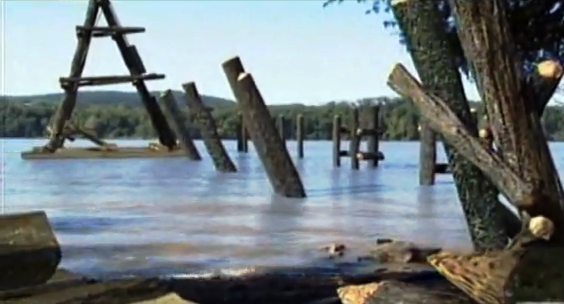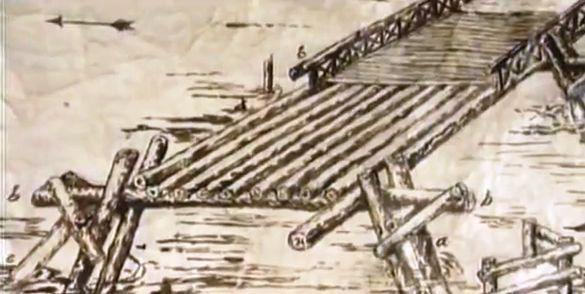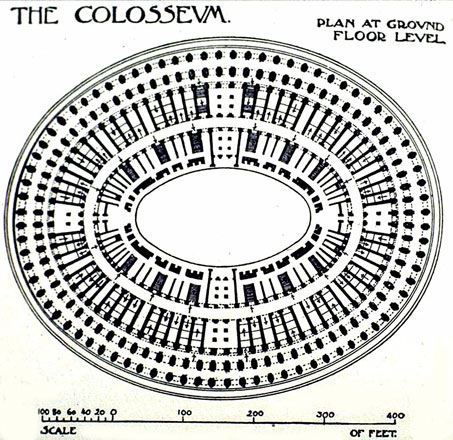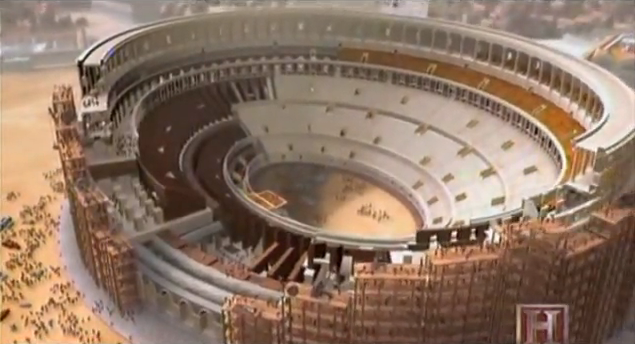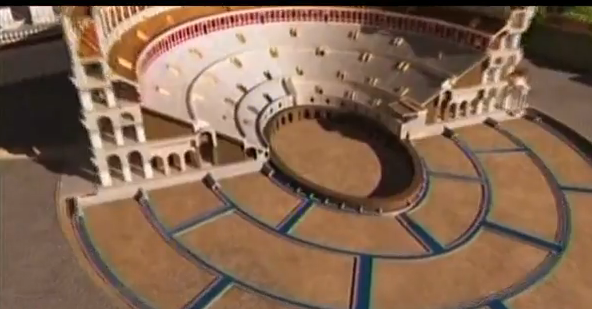Roman Empire
Roman Empire (1st century B.C.E. - 500)
In the history of project management this period saw the Roman Empire reach its zenith, were 25% of the world’s population were part of it. Roman projects were driven primarily by the state of the Roman Empire using materials primarily like concrete with a veneer of stone. New architectural forms like the arch reduce the volume of materials, and increase the strength of the structure. There is an increased usage of draft animals and increasingly more sophisticated equipment like giant cranes (based on the catapult).
Bridge Over the River Rhine 55 BCThe Romans were masters of project management and nothing exemplifies this better than this project. Julius Caesar was leading 8 legions (40,000 men) north through Gaul (France). No Roman commander had been able to cross the Rhine River to Germania (Germany).
As he stood on the banks of the colossal river his options were to cross by boat but this would be risky because of the fast current, and he had to bring across his cavalry with horses. He also had hostile Germanic tribes on the other side ready to do battle.
The other option was to build a bridge but the scope of this required a bridge to cross a river 300 meters (1000 feet) wide and 9 meters (30 feet) deep, and carry the weight of 40,000 men, horses, and equipment.
The technical challenges required a very stable bridge, which was achieved with double timber pilings rammed into the bottom of the river at an angle, using huge pile-drivers in wooden frames.
The project had to be completed very quickly. An immense volume of timber was required for the pilings, connecting beams (2 feet thick), lengths of timber for the walkway, and tightly wrapped bundles of sticks. This is where the mastery in project management came through in organizing the army to feed this supply-chain, and to work in very a confined space bringing all the different skill sets available to bear.
Every hour the project progressed it had a psychological impact on the on looking tribes who eventually fled. Just 10 days after initiating the project Caesar crossed without any opposition and roamed around for 18 days. He had expected an opposing force of 400,000. The project could not be replicated today with this kind of technology. It underlines the organizational ability of the Romans. |
|
Colosseum in Rome, circa 70sThe Romans had mastered several technologies that made the Colosseum possible.
First the use of concrete and bricks that were strong and flexible. They used concrete for the core with a veneer of costly materials applied to the outside. Concrete was one of the most significant Roman construction materials (200 B.C.E.). The Romans improved Greek Cement by using finely ground volcanic lava (pozzolana) in place of clay, and this was the strongest mortar in history until the development of Portland cement. The addition of small fragments of volcanic rubble resulted in concrete which made possible the arch. This material technology had been perfected over 300 years.
Second the extensive use of arches and vaults allowed for vast structures to be built with a fraction of the materials. Third the increased used of sophisticated mathematics. With this combination it was possible to build a stadium capable of seating around 50,000 spectators in a relatively short time frame. |
|
|
The project was delivered by four contractors. Their contracts detailed specifications of the work, requirements for guarantees, and the methods of payment and time were important. The design incorporated a three-storied arcade with rows of arches at each of the levels. The first level consisted of 23 ft high and 14 ft wide Doric "order" or style arches, the second level was designed with 21 ft high and 14 ft wide Ionic arches and the third level 21 ft high and 14 ft wide Corinthian style arches. This is a natural progression from sturdiest and plainest arches (Doric) at the bottom, to slenderest and richest arches (Corinthian) at the top.
|
|

